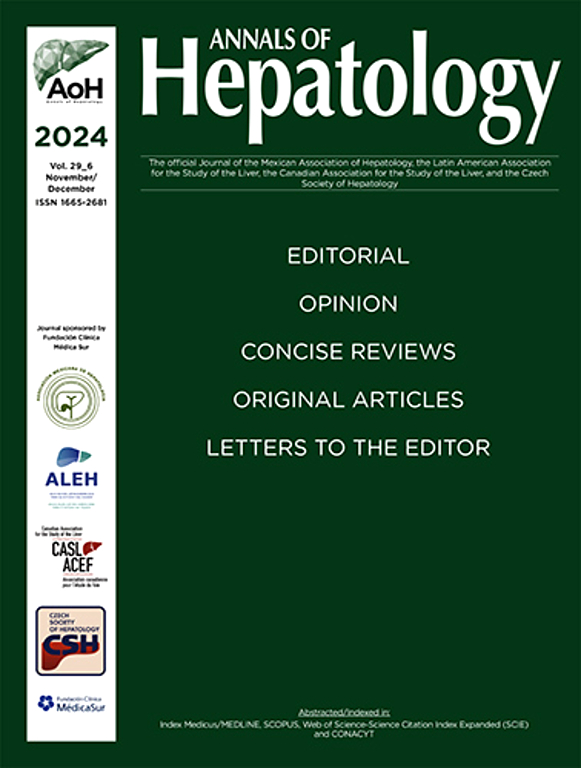P-46 IMMUNOSUPPRESSION IN POST LIVER TRANSPLANTATION: REVIEW OF THE EXPERIENCE IN A CHILEAN UNIVERSITY HOSPITAL
IF 3.7
3区 医学
Q2 GASTROENTEROLOGY & HEPATOLOGY
引用次数: 0
Abstract
Conflict of interest
No
Introduction and Objectives
Liver transplantation is currently a cost-effective therapy for the treatment of advanced liver diseases. Immunosuppression plays a key role in the prevention of organ rejection. Corticosteroids and anti-CD-25 antibodies are used in the induction phase, while calcineurin inhibitors, mycophenolate, corticosteroids and mTOR inhibitors are used in the maintenance phase. Objectives: To describe the type of immunosuppression regimen used in the management of liver transplant patients during the first post-transplant year.
Patients / Materials and Methods
Observational, retrospective cohort study of adult patients undergoing liver transplantation at the Hospital Clínico UC (Santiago, Chile), between January 2020 and June 2023. Demographic and clinical data were included. Immunosuppression regimens used in four periods during the first year of follow-up (at discharge, third, sixth and twelfth month) were evaluated. Pediatric patients, combined transplants and cases with post-transplant follow-up in centers not associated with our hospital were excluded.
Results and Discussion
A total of 160 patients were analyzed, of whom 149 (93.1%) were cirrhotic. The predominant etiology was MASLD (34.3%). The average age was 54 years, with a predominance of females (53.7%). The active immunosuppression regimen at discharge and at the third month of follow-up was the combination of tacrolimus, mycophenolate, and prednisone, representing 68% and 56%, respectively. The dual tacrolimus-mycophenolate mofetil regimen was the most prevalent at month 6 (26%), while at one year of follow-up, tacrolimus monotherapy was the most commonly used (27%). Only 34% of cases were able to maintain monotherapy at one year after transplant (43 pacients with tacrolimus, 6 with cyclosporine and 6 with everolimus).
Conclusions
Tacrolimus is the most frequently used immunosuppressant in the maintenance phase. The use of mycofenate mofetil and prednisone decreases as time progresses post-transplant. Only one third of cases achieved monotherapy at one year of follow-up.
求助全文
约1分钟内获得全文
求助全文
来源期刊

Annals of hepatology
医学-胃肠肝病学
CiteScore
7.90
自引率
2.60%
发文量
183
审稿时长
4-8 weeks
期刊介绍:
Annals of Hepatology publishes original research on the biology and diseases of the liver in both humans and experimental models. Contributions may be submitted as regular articles. The journal also publishes concise reviews of both basic and clinical topics.
 求助内容:
求助内容: 应助结果提醒方式:
应助结果提醒方式:


